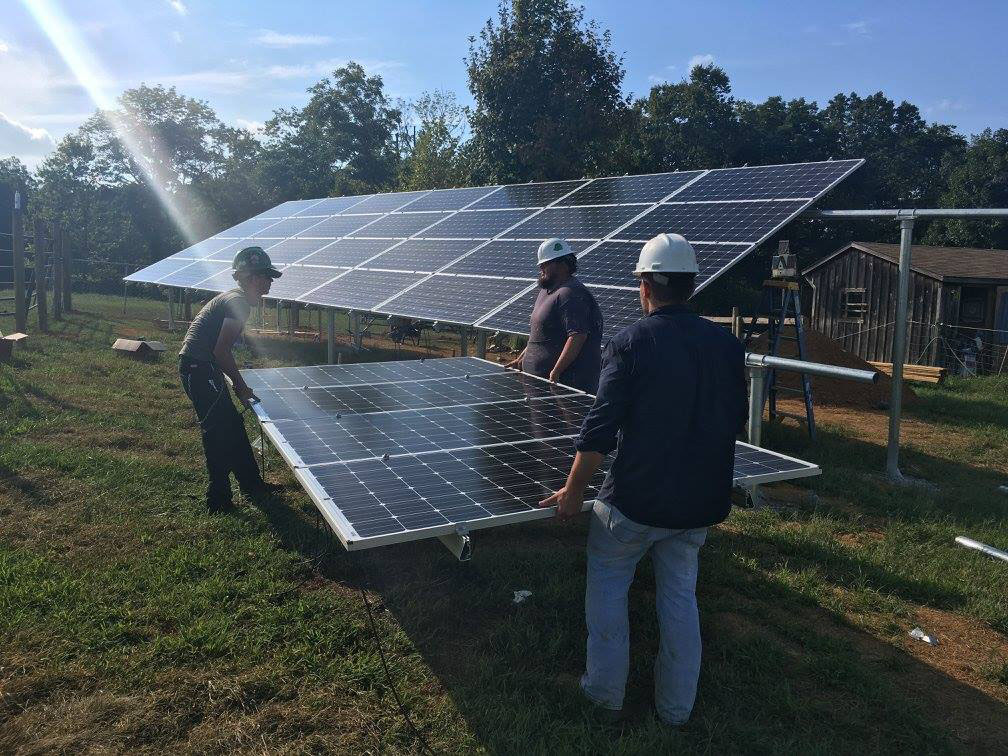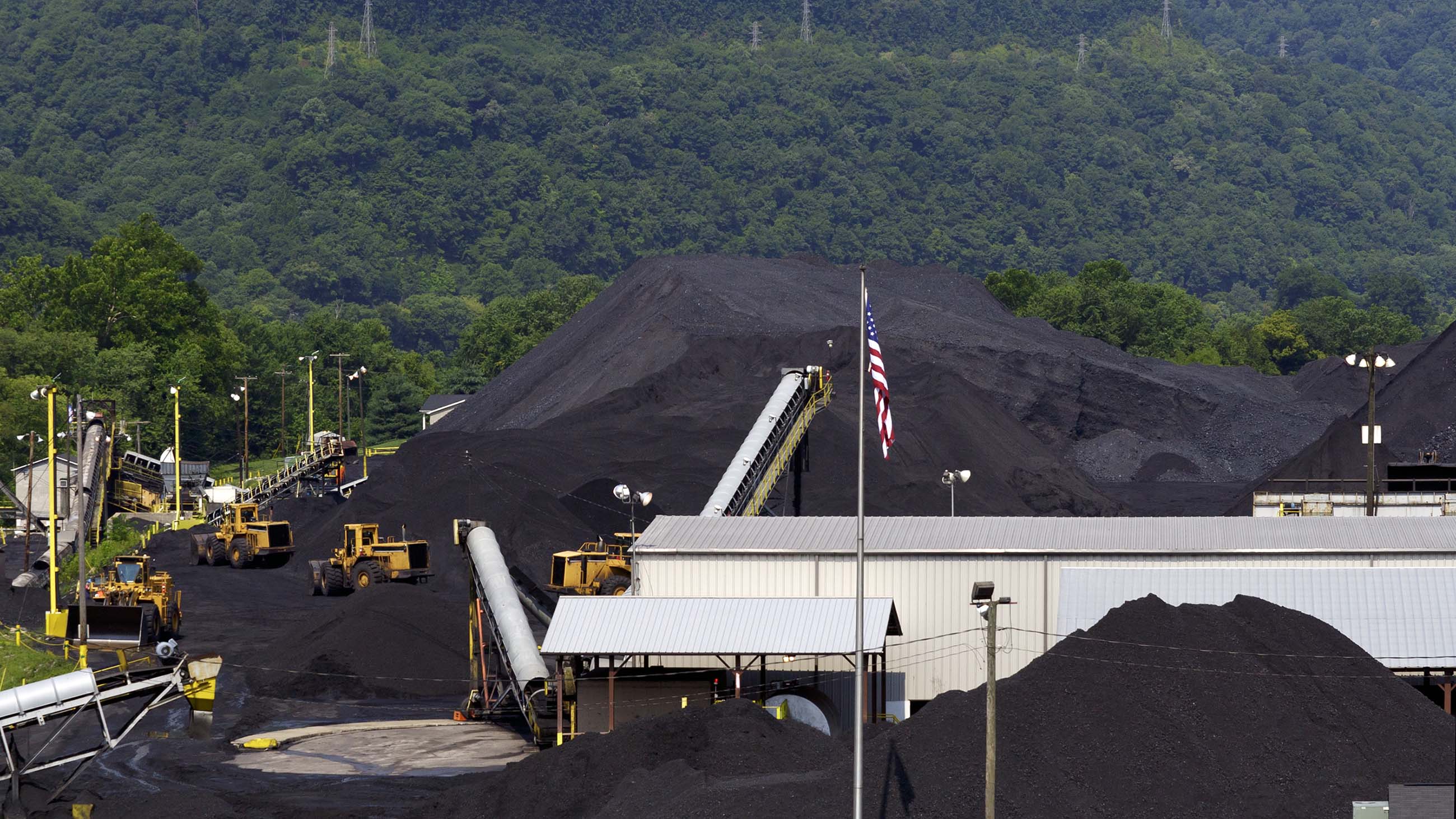Solar in the Holler?
With the presidential candidates arguing over how to save America’s coal jobs, one recent study offered up a solution: Retrain coal workers for jobs in the country’s booming solar industry. It’s a popular idea, and one that President Obama’s 2016 Power+ Plan aims to support with $20 million carved out specifically for converting coal miners and coal-fired power plant workers into solar industry employees.

Workers install solar panels at a farm outside of Shepherdstown, West Virginia.
Visual: Solar Holler
That all sounds great, says Dan Conant, the founder of Solar Holler, a company focused on bringing clean energy to West Virginia — a state hard-hit by the coal industry’s decline. But retraining programs, he argues, too often ignore a crucial part of the employment calculus.
“What was unfortunate about that study is that it didn’t consider the demand side of the equation,” Conant says, “You can retrain folks all you want, but if you don’t have jobs available in that region, what are we asking them? To move to California or Massachusetts?”
The solar industry tallied nearly 210,000 employees in the U.S. as of last year, according to the nonprofit Solar Foundation — up from just 100,000 in 2011. More than half of the jobs were installers, with sales, manufacturing and other related jobs rounding out the rest. By comparison, the federal Energy Information Administration puts coal industry employment nationally at just over 70,000 people — a precipitous, multiyear decline driven in part by the advent of mechanized surface mining and, more recently, the emergence of abundant and cheap natural gas, which competes directly with coal as a fuel source for electricity production.
Roughly 30,000 people were employed in coal production in West Virginia — the historic heart of coal country — in 1994, according to state employment data. Today, that number is just a hair over 15,000, and it is expected to continue falling. But even if solar jobs are booming elsewhere in the country, that boom hasn’t yet materialized in West Virginia. As of last year, only 300 people worked in the solar industry in the state, which also lags behind most of the country in terms of installed photovoltaics. To date, West Virginia has only enough solar systems up and running to power 300 homes, according to the Solar Energy Industries Association.
“As part of any of these retraining programs, we have to have an equally big push to help build the market,” Conant says. That means educating local government officials, construction contractors, and utility companies about how solar energy infrastructure works. Building the market also means making solar installations more affordable to people and businesses, Conant adds, which is why Solar Holler is also working to find financing for residents and businesses in West Virginia interested in installing solar systems.
So far, Solar Holler’s job retraining program has recruited 10 workers – “young people from coal communities hard hit by mine closures,” Conant says. They’ve been placed in two-year paid apprenticeships working in the solar industry — mostly on installation crews in the southern coalfields of the state — and they’ll leave with an associate’s degree. The new solar recruits also aren’t required to pay tuition, which sets Solar Holler apart from other solar job retraining and certification programs like Solar Energy International.
That’s important, says Conant — particularly for struggling communities that have long depended on coal for their livelihoods.
“We don’t want to leave these individuals behind,” he says, “and we don’t want to leave the entire community behind that has given everything over the last 150 years to power the country.”










